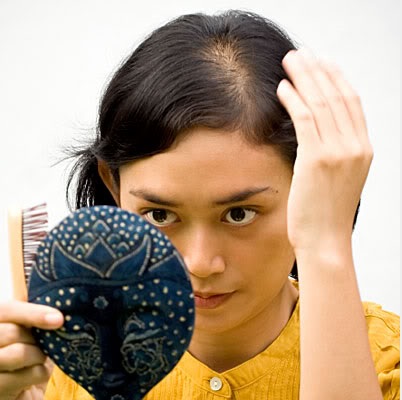Causes of Female Alopecia
Female pattern hair loss may happen as early as the stage of puberty, and if this is the case, hormone imbalance, such as excess facial or body hair, should lead to having a hormone evaluation be done. Many women do not realize that hair loss can occur after pregnancy or stopping the usage of birth control pills. It may also follow any sudden physical or psychological stress to the body. If lots of hair begins to fall out throughout the scalp, it’s obviously due to a change in the normal hair cycle: either a short anagen phase or an increase in the number of follicles that enter the telogen phase. This is called telogen effluvium or stress alopecia. A shock to the body’s system, which stresses the hair follicles, is often to blame for this change in cyclical hair events.
The difference between male and female balding is seen in the pattern of hair loss. Men most often lose hair at the temples and crown, while female pattern balding goes around the whole top of the head and diffuses. Not coincidentally, the hormone and enzyme receptor sites are also different in varying areas of the scalp — another reason doctors now believe the loss patterns are caused by different precipitating factors. Another important difference is that while balding in men is almost always the result a genetic predisposition coupled with age; in women, it can happen at any time. In addition, underlying medical conditions can also be the cause of hair loss — even when true androgenic alopecia is the diagnosis.
The most important way to treat hair loss in women is to find the causes of female alopecia in them. Make certain to check for possible underlying medical conditions via blood tests, or if needed, a scalp biopsy.
The DermHair Clinic in Los Angeles specializes in treatments for hair loss in women. Dr. Umar is board certified by the American Board of Dermatology, and is qualified to manage female patients with complaints of hair loss. Dr. Umar may require performing some tests to determine the cause of your hair loss and the best treatment options available.

